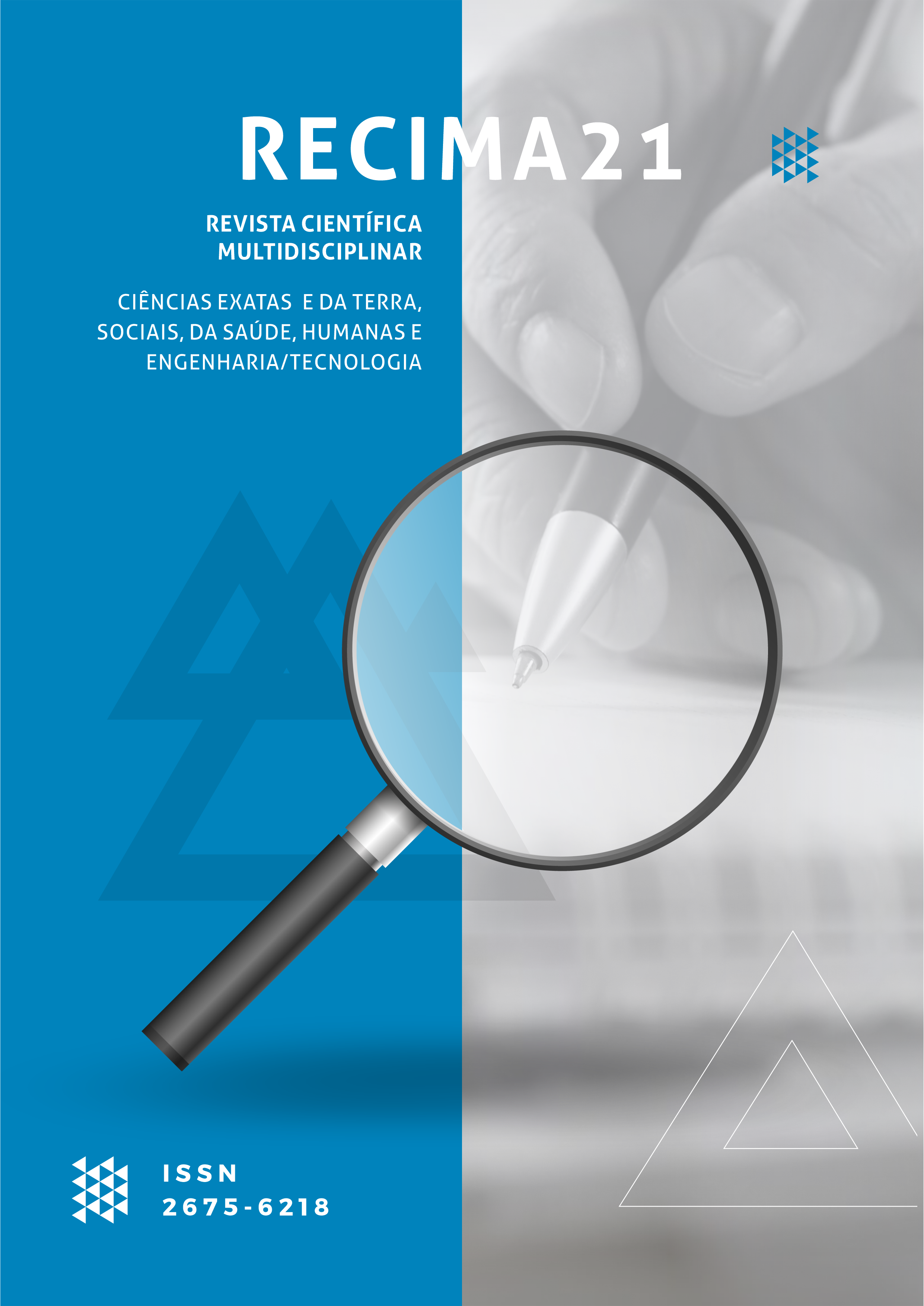THE USE OF MULTIPLANE AS A WORKABLE MATERIAL IN THE TEACHING OF MATHEMATICS FOR THE VISUALLY IMPAIRED
DOI:
https://doi.org/10.47820/recima21.v3i4.1405Keywords:
Multiplane, Inclusion, Special education, Visual impairmentAbstract
The present article approached a pedagogical proposal with the use of the multiplane in order to facilitate the teaching and learning of mathematics for certain groups of students who have difficulties in their learning, specifically for the visually impaired. Bearing in mind that one should not, or should not, exclude students with disabilities, but encourage their inclusion, the multiplane is a concrete material, in which blind and low vision students can develop learning in a constructive way, focusing on learning. of mathematics, as the main objective is not simply to memorize formulas, but to develop and understand a broad knowledge of mathematics, both in the classroom and in other areas of knowledge. It should be noted that such a tool serves as an instrument for an inclusive proposal, since it facilitates the learning of students with difficulties caused by the disability mentioned here, thus expanding the possibility of mastering the content. It is known that this material provides the learning of a multitude of mathematical activities in the most diverse fields: algebra, geometry, statistics, physics, etc. Thus, the objective of the work was to make a bibliographical survey of works that demonstrate that the use of the multiplane in the teaching of mathematics for visually impaired students and how this concrete material can help in the assimilation of the most abstract contents of the field of mathematics.
Downloads
References
ASSUNÇÃO, E. Problemas de Aprendizagem. 13. ed. São Paulo: Ática, 2010.
BRASIL. LDB: Lei de diretrizes e bases da educação nacional: Lei n° 9.394, de 20 de dezembro de 1996, que estabelece as diretrizes e bases da educação nacional. 13. ed. Brasília: [s.n.], 2016.
CAMARGO, Eder Pires De. Inclusão social, educação inclusiva e educação especial: enlaces e desenlaces. Ciência & Educação (Bauru), v. 23, n. 1, p. 1–6, 2017.
FERMINIO, Denis Correa. Educação Inclusiva: A inserção escolar como processo de inclusão e exclusão. 2017. 1–90 f. Universidade do Extremo Sul Cararinense - UNESC, 2017.
FERNANDES, Nidia ; e FERNANDES, Wagner Luiz. Software de inclusão do deficiente visual ao ambiente computacional. São Paulo: [s.n.], 2010.
FERRANATO, Caroline Ananias. Medição do impacto da matemática e o “case” do multiplano. 2015. 52 f. Universidade Federal do Paraná, 2015.
FERRATO, Rubens. A Construção de Instrumento de inclusão no Ensino da Matemática Dissertação de Mestrado. 2002.
FIORINI, Maria Luiza Salzani e DELIBERATO, Débora e MANZINI, Eduardo José. Estratégias de ensino para alunos deficientes visuais: A Proposta Curricular do Estado de São Paulo. Motriz. Revista de Educacao Fisica, v. 19, n. 1, p. 62–73, 2013.
FREIRE, Paulo. Pedagogia da Autonomia. 25. ed. São Paulo: Paz e Terra, 1996.
GIL, Marta. Deficiência Visual. Brasília: [s.n.], 2000. Disponível em: . Acesso em: 11 dez 2021
JUNIOR, Henrique Arnoldo. Estudo do Desenvolvimento do Pensamento Geométrico por alunos surdos por meio do multiplano no ensino fundamental. 2010. 292 f. Universidade Católica do Rio Grande do Sul, 2010.
MANTOAN, Maria Teresa Eglér. Inclusão escolar: O que é? Como fazer? Moderna ed. São Paulo: [s.n.], 2003.
NORDESTE, Diário Do. Multiplano: Invento facilita o estudo da matemática pelos cegos. 2002 Disponível em: <http://www.sac.org.br/instituto/DN00033.htm>. Acesso em: 15 dez 2021.
PRADO, Luciana da Silva. Sala de recursos para deficientes visuais: um itinerário, diversos olhares. 2006. 198 f. Universidade de São Paulo, 2006.
RODRIGUES, Priscila Acacio e MAGALH, Bezerra e PINHEIRO, Ivoneide. A UTILIZAÇÃO DO MULTIPLANO PARA A APRENDIZAGEM DE. n. 1, 2010.
ROGALSKI, S. M. Histórico do Surgimento da Educação Especial. Revista de Educação do IDEAU, v. 5, n. 12, p. 1–13, 2010.
SÁ, Elizabet Dias De e CAMPOS, Izilda Maria De e SILVA, Myriam Beatriz Campolina. Atendimento educacional especializado: Deficiência Visual. Brasília: Gráfica e Editora Cronos, 2007.
SILVA, Rawlison dos Santos. A utilização do multiplano no ensino da matemática na educação básica: uma proposta para a educação inclusiva. 2016. 64 f. Universidade Federal do Tocantins, 2016.
SOUSA., Joana Darc Oliveira de Souza e. Leitura de Formas com o Tato: Possibilidade de Aprendizagem Significativa para Alunos Cegos. VIII Encontro da Associação Brasileira de Pesquisadores em Educação Especial, p. 1354–1363, 2013.
STAINBACK, Susan; STAINBACK, William. Inclusão: um guia para educadores. Trad. de Magda França Lopes. Porto Alegre: Artmed, 1999.
VIVIAN, Clarice Fonseca. O multiplano como instrumento de aprendizagem: um estudo de caso sobre a pessoa com paralisia cerebral. 2018. 29 f. Universidade Federal do Pampa, 2018.
Downloads
Published
Issue
Section
Categories
License
Copyright (c) 2022 RECIMA21 - Revista Científica Multidisciplinar - ISSN 2675-6218

This work is licensed under a Creative Commons Attribution 4.0 International License.
Os direitos autorais dos artigos/resenhas/TCCs publicados pertecem à revista RECIMA21, e seguem o padrão Creative Commons (CC BY 4.0), permitindo a cópia ou reprodução, desde que cite a fonte e respeite os direitos dos autores e contenham menção aos mesmos nos créditos. Toda e qualquer obra publicada na revista, seu conteúdo é de responsabilidade dos autores, cabendo a RECIMA21 apenas ser o veículo de divulgação, seguindo os padrões nacionais e internacionais de publicação.













